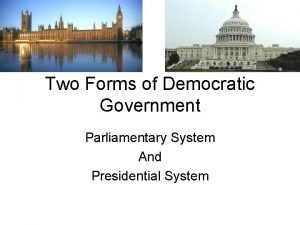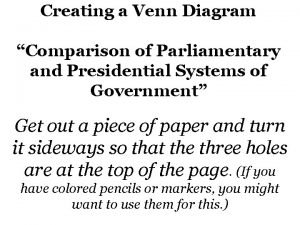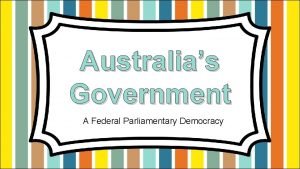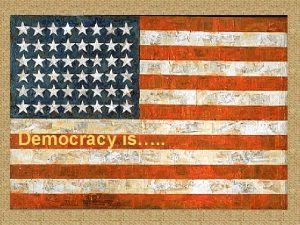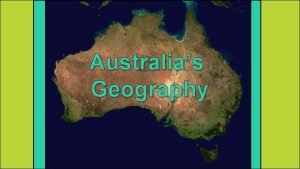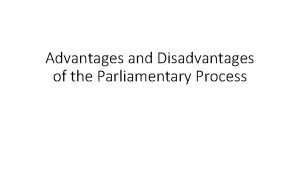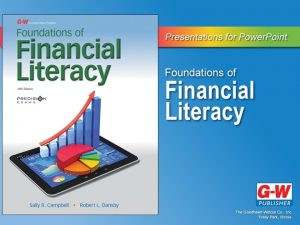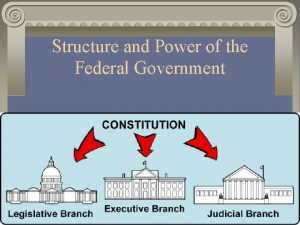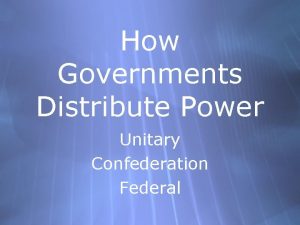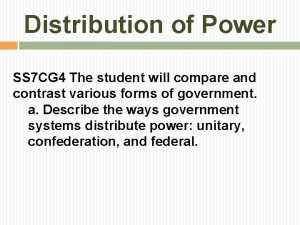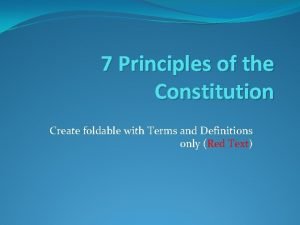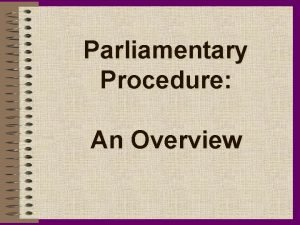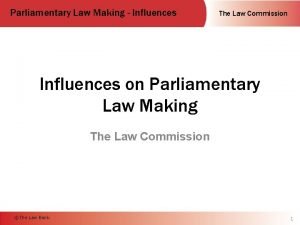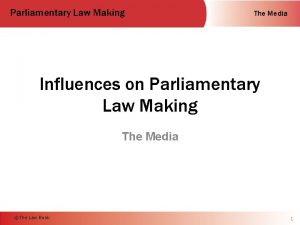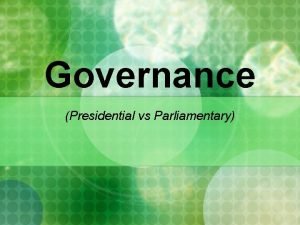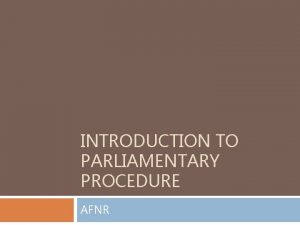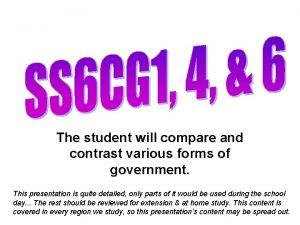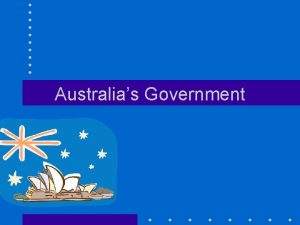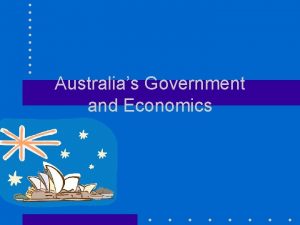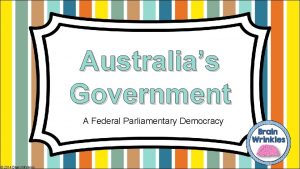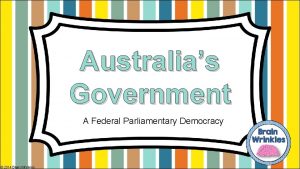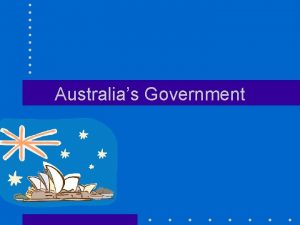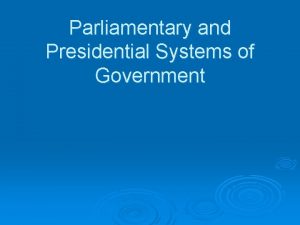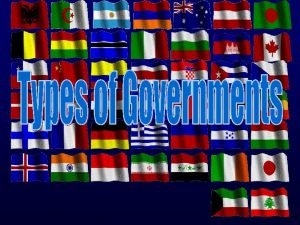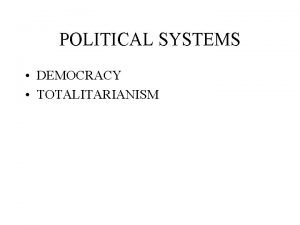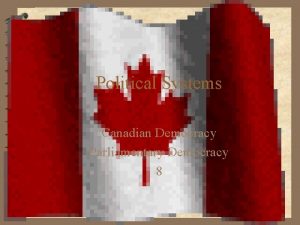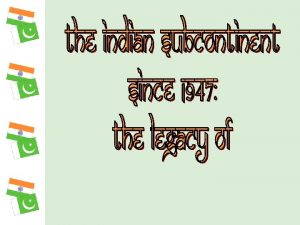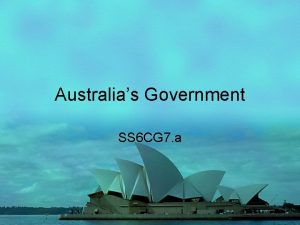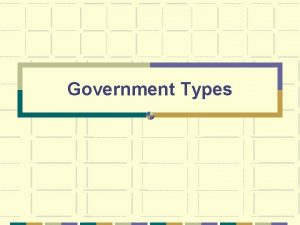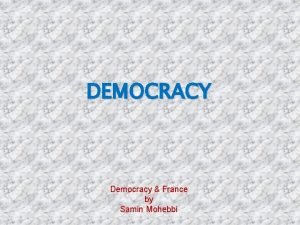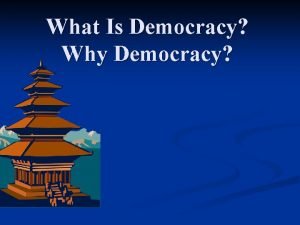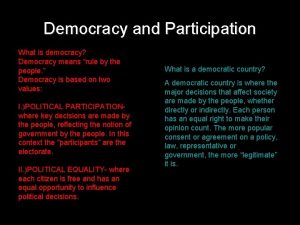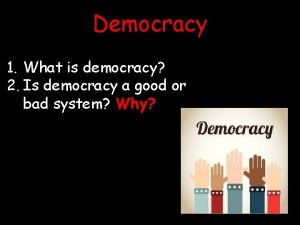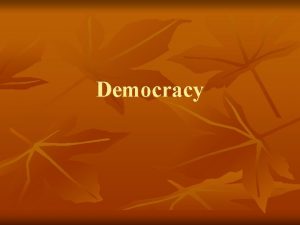Australias Government A Federal Parliamentary Democracy Australias Government

























- Slides: 25

Australia’s Government A Federal Parliamentary Democracy

Australia’s Government A Federal Parliamentary Democracy

Let’s Review Government Systems – Who has the power? • Unitary--power is held by one central authority • Confederation--association of independent states that agree to certain limitations on their freedoms by joining together • Federal--power is divided between central authority & several regional authorities Which system does Australia have?

Let’s Review Government Types – how do citizens participate? • Autocracy-- 1 person possesses unlimited power & citizens have limited role in government • Oligarchy-- small group exercises control & citizens have limited role in government • Democracy--supreme power is vested in the people & exercised by them directly or indirectly though a system of representation involving free elections Which type does Australia have?

Let’s Review Two Types of Democratic Governments: • Parliamentary– citizens elect members of Parliament, and then the members select the leader o Leader works with or through the legislature • Presidential--system of government in which the leader is constitutionally independent of the legislature; citizens directly elect leader o Leader works separate from legislature Which type does Australia have?

Australia’s Government • Federation (federal system) • Constitutional Monarchy • Parliamentary Democracy

Parliament House in Canberra is home to Australia’s government.

Inside Parliament House

Federal System • Australia has a federal system, which means that the national government and the state governments SHARE power. • There are 6 states and 2 territories in Australia.


Constitutional Monarchy • Constitutional Monarchy- A monarch inherits the right to rule but is limited by laws and a law making body elected by the people. • Australia’s constitution lists the powers of the government. • The British monarchy, a king or queen, is the head of state. However, since the monarchy does not live in Australia, he or she chooses a governorgeneral to act in his or her place…

Leadership 1. Head of State: Monarch of the United Kingdom (presently, Queen Elizabeth II); little political power 2. Governor General: stands in for the monarch 3. Prime Minister: holds the most political power; works closely with the legislature

Her Majesty Queen Elizabeth II

Her Excellency The Honorable Quentin Bryce Governor General

The Honorable Tony Abbot Prime Minister

How Leaders Are Chosen • Governor General: appointed by the monarch on the advice of the Prime Minister; the Constitution does not set a length of term but most serve for 5 years • Prime Minister: is the leader of the majority party in the House of Representatives; indirectly elected by the people

Legislature = the central authority of a government • Australia’s legislature is called Parliament. • The citizens of Australia vote for members of Parliament. o Members of Parliament belong to many different political parties.

Parliament • House of Representatives (150 seats): Australia is divided into areas called electorates; people living in each electorate vote for a person to represent them in Parliament. • The elected person becomes the member of parliament of the House of Representatives for that area. • Senate (76 seats): People from each state and the 2 territories elect people to be their senators

House of Representatives

Senate

Parliamentary Democracy • Whichever political party has the most members in the legislature selects the Prime Minister. • This is the major difference between a Presidential Democracy and a Parliamentary Democracy! o Parliamentary Democracy – legislature (Parliament) chooses Head of Government (Executive Leader) • Citizens vote for members of Parliament, members choose the Prime Minister.

Role of the Citizen • Citizens who are 18 - 70 are required by law to vote. • As a democracy, its citizens must participate in voting and elections: o They elect members of Parliament. o They elect regional government officials (state governors). o They also vote on specific issues.

Branches of Government • Australia has 3 Branches of Government just like any other Democratic Country. • Executive Branch – this is the Prime Minister • Legislative Branch – this is Parliament is made up of two groups: the House of Representatives and the Senate • Judicial Branch – made up of all the courts in Australia

HOUSE OF REPRESENTATIVES

 What is parliamentary system
What is parliamentary system Parliamentary vs presidential venn diagram
Parliamentary vs presidential venn diagram Parliamentary democracy
Parliamentary democracy Cartoon analysis about democracy
Cartoon analysis about democracy What are the three levels of government
What are the three levels of government Australia major landforms
Australia major landforms Australias geography
Australias geography Australias capital
Australias capital Merits of parliamentary government
Merits of parliamentary government Parliamentary government advantages and disadvantages
Parliamentary government advantages and disadvantages Federal government primary source of revenue
Federal government primary source of revenue Federal government
Federal government Federal republic
Federal republic Federal system of government
Federal system of government Fmvrs license plate
Fmvrs license plate Federal government definition
Federal government definition Federal authority for government human resources
Federal authority for government human resources History of parliamentary procedure
History of parliamentary procedure Influences on law making
Influences on law making Disadvantages of media influence on parliament
Disadvantages of media influence on parliament Presidential vs parliamentary
Presidential vs parliamentary Introduction to parliamentary procedure
Introduction to parliamentary procedure Parliamentary procedure hosa
Parliamentary procedure hosa Limitations of sovereignty
Limitations of sovereignty Parliamentary system vs presidential system
Parliamentary system vs presidential system British parliamentary debate
British parliamentary debate
